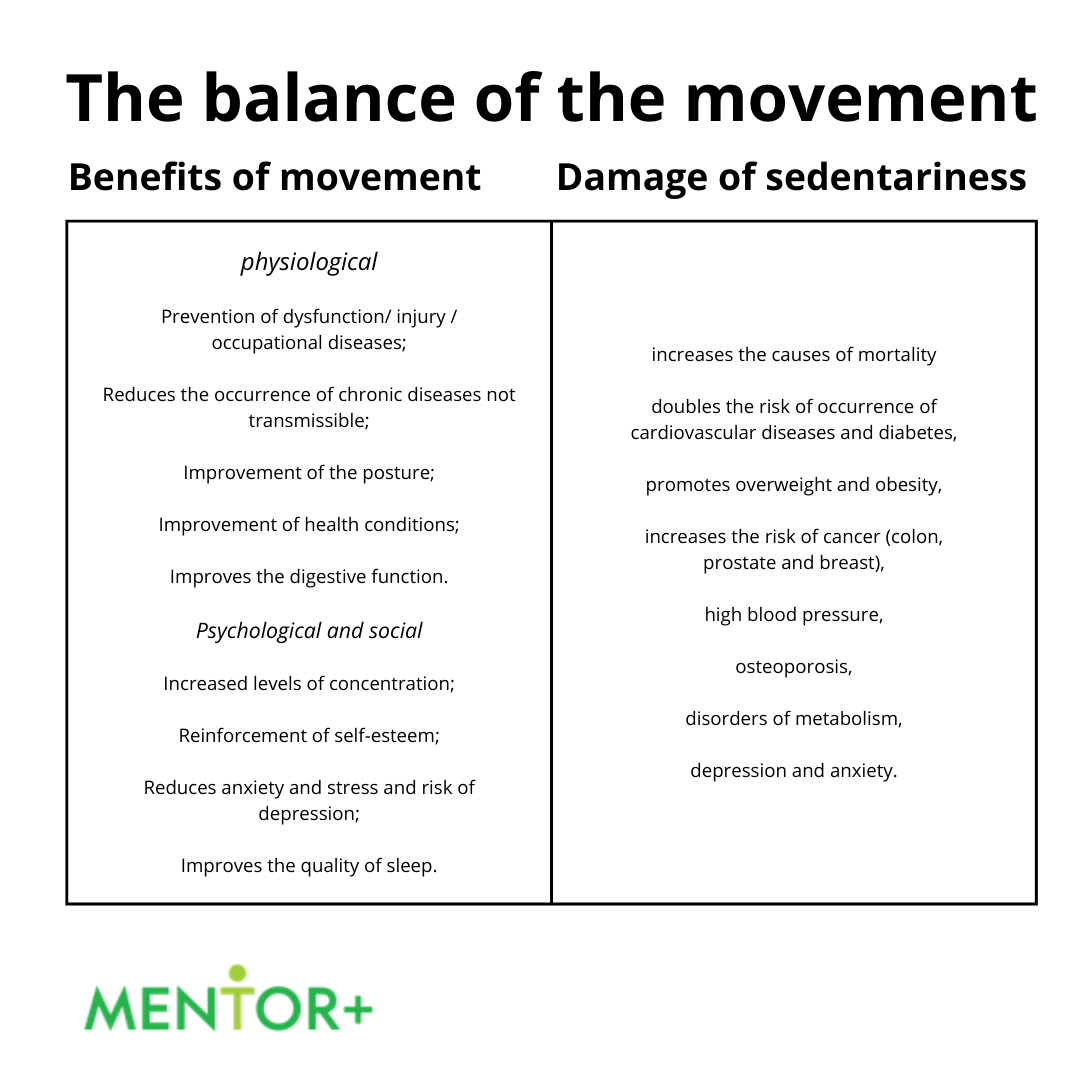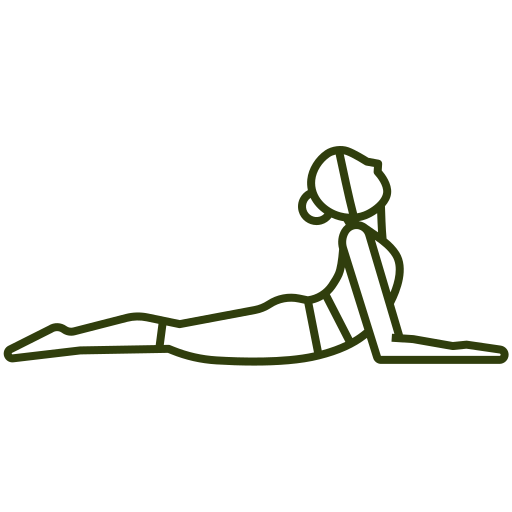Hints of wellness and physical activities
The World Health Organization (WHO) defines health-related quality of life as the individual’s perception of their position in life, in the context of the cultural and value systems in which they are inserted, and in relation to their goals, expectations, standards and concerns.1
In the case of healthy habits, all countries point to the relevance of including physical activity in the teleworkers’ routine; some companies, mentioned in Italy, offer gym programmes or incentives to participate in sports clubs, or wellness services such as massages, yoga, meditation, to help employees manage stress and improve their physical health.
There are different interventions designed to stimulate physical activity, according to Fenton, S. J., Pinilla Roncancio et al (2014):
- Health insurance benefits or reimbursement for health club membership
- Environmental interventions: such as access to healthy foods, cafeteria modifications, to facilitate opportunities to engage in physical activities
- Individual interventions: counselling, exercise and nutrition programmes and healthy eating changes.
In another study, Van Eerd et al (2022) stated that:
“OHS professionals and workplaces should address key implementation elements related to proactivity, customization, and supporting MSD (MusculoSkeletal Disorders) knowledge and recognition. In addition, good communication, implementation, and sufficient resources are paramount”. Basically, these paper findings show that ergonomics and knowledge in MSD prevention are just as important as good communication among employees and employers.
Moreover the ergonomics’ recommendations include the need to have a work surface large enough to accommodate the monitor, keyboard, mouse and other necessary technological elements; monitors should be positioned so that the upper part of the monitor is at eye level, using a support if necessary, allowing a relaxed, comfortable posture and minimizing overexertion. In addition, it is advisable to use a keyboard and mouse independent of the computer to maintain a more relaxed posture of shoulders and arms, to take frequent breaks with physical postural exercises and stretching and to promote actions to reduce the time spent in front of the computer with a good management of working hours. To make these improvements, it is necessary to cooperate with the employer.
Finally, the best way to avoid teleworking hazards, is to keep yourself active trying to alternate your sitting positions with some walks and exercises.
Another problem during telework is stress. It is reported among teleworkers, due to the possible work overload caused by technology, increasing fatigue, irritability and inability to rest adequately. Technostress’ concept helps us to focus also on the digital divide aspect. In fact, Technostress is defined as “the stress caused by not being able to adapt to new technologies, manifesting itself in a conflictive relationship with them, which can have both physiological and psychological consequences for employees”.
There is a different approach to teleworking from country to country, except for one common point to all the world: teleworking aggravates the conflict of reconciling work and family life.
- In the US: teleworkers spent quality time with their pets and family even though the office workers had the opportunity to socialize with co-workers.
- In Italy: Teleworking hours aggravates work life conflict, blurring the gap between private and working life. This affects the capability to switch off, set a timetable to regain energy.
- Greece: A substantial number of Greek teleworkers reported their employers’ request to be available outside normal working hours or to be required to work outside working hours.
Regarding mental health, which is one of the main aspects of wellness, and with regard to work-life balance, it is desirable to establish clear boundaries between work and personal time, to prevent employees from exceeding legal working hours and causing conflicts in their private sphere.
Benefits and harm of having an active or sedentary lifestyle
There are clear and known differences in wellbeing between a person with a sedentary lifestyle and another with an active lifestyle.
Many people worldwide engage in sedentary lifestyles, and the prevalence of relevant non-communicable diseases is on the rise. It is well known that insufficient physical activity, that is, physical inactivity, has a detrimental effect on health. Physical inactivity is the fourth leading risk factor for global mortality, accounting for 6% of global mortality. Despite the fact that sedentary behavior poses a comparable risk to health and contributes to the prevalence of various diseases, most physical activity-related education in clinical practice is focused on improving the physical activity levels, with less emphasis on lowering the sedentary behavior.
A few recent studies have reported that increasing physical activity can offset the adverse impacts of sedentary behavior. In particular, the offset effect was more evident in people with little physical activity.
In terms of sedentary lifestyles, teleworking increases the time spent sitting and the risk of suffering from health problems, obesity and heart disease. In terms of ergonomics workers may experience discomfort, the most frequent being back, neck, shoulder and hand pain, leading to the appearance of musculoskeletal disorders, such as contractures, tingling, back problems and asthenia (general weakness or fatigue). Teleworking can also generate visual or eye fatigue, due to excessive effort during long periods of time in front of computer screens, causing headaches, vertigo, anxiety, muscular discomfort or in some cases photo-sensitive epilepsy.

WHO recommendations
It is advisable to engage in sufficient exercise equivalent to or more than 150–300 minutes of MPA (Moderate Physical Activity) per week, as studies found that physical activity could offset the adverse effects of sedentary behavior. If sufficient exercise cannot be performed, individuals should at least perform light physical activity, as opposed to not engaging in physical activity at all as health benefits can be obtained even with light physical activity, albeit insufficient; they should further try to increase their physical activity levels as their situations permit2.
Here some indication from WHO, World Health Organization Guide Lines 2021:
References
[1]
Moreira, Sara, et al. “Positive Effects of an Online Workplace Exercise Intervention during the COVID-19 Pandemic on Quality of Life Perception in Computer Workers: A Quasi-Experimental Study Design.” International Journal of Environmental Research and Public Health 19.5 (2022): 3142
[2]
PARK, Jung Ha, et al. Sedentary lifestyle: overview of updated evidence of potential health risks. Korean journal of family medicine, 2020, 41.6: 365.


